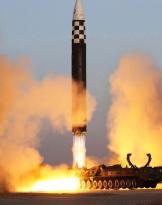Russian Energy Minister Nikolai Shulginov (photo) said on Tuesday that all oil exports affected by Western sanctions have been diverted to 'friendly' countries without a significant drop in sales
Before the sanctions, Russian oil accounted for 90% of EU oil imports. Nonetheless G7 finance ministers agreed to cap the price of Russian seaborne oil and refined petroleum products in September 2022 as a way to undermine Putin's ability to finance his illegal war in Ukraine through inflated global oil prices while ensuring that third countries can continue to guarantee affordable oil. In February this year, however, the EU imposed a ban on Russian diesel and petroleum products after finding new diesel supplies from the US, Middle East and India to replace Russian energy supplies.
Following the sanctions, Russia has turned to allied or neutral nations as new importers. Russian oil exports to India, according to Russian Deputy Prime Minister Alexander Novak, are increased 22 times since the introduction of sanctions. Novak told the energy forum that energy revenues accounted for 42% of Russia's federal budget in 2022, up from 36% a year earlier. He said the industry is stable despite Western sanctions, stating that: "most of our energy resources have been redirected to other friendlier markets"1.
Russia is said to have cut crude oil production by 500.000 barrels a day this month, reducing daily production by 5%. The IEA (Energy Information Administration) said Russia's estimated oil export revenue fell to $11,6 billion last month, down $2,7 billion from January when volumes were significantly higher.
The United States, on the other hand, in 2022, exported an average of 3,6 million barrels per day of crude oil (a fact never happened before) or 22% higher than in 2021. This increase in production is attributable to the greater global demand for crude oil from countries other than Russia. Prior to 2022, OECD Europe had been the largest regional importer of Russian crude oil, receiving 2,3 million barrels per day from Russia in 2021.
Less crude oil was exported to India and China from the United States in 2022 than in 2021 because the two countries imported more crude oil discounted from Russia. India was the largest destination of US crude oil exports in 2021; China had been in 2020. Declining demand for US crude oil exports to India and China was more than offset by increased demand from other destinations, particularly in Europe.
The U.S. oil and gas industry has lobbied the Biden administration to allow more domestic drilling both offshore and on land and to ease regulations for big companies trying to increase their fossil fuel extraction.2
With the number of new US oil and gas rigs increasing this week (eight more) it appears the Biden administration has accommodated those requests and continues to push to ramp up natural gas production. Baker Hughes in mid-March reported that US natural gas companies added the most rigs in a week since December 20183.
The total increase in platforms over the same period last year is 91, or an increase of 13,7%.
According to the US government, exports of liquefied natural gas increased by 14% compared to last year and it expects exports to increase by another 5% in 2024.
The increase in the number of rigs comes as the United States looks to shore up its exports of liquefied natural gas to replace Russian fuel. The number of oil and gas platforms is a indicator of future production and the Biden administration appears to be set on more investment in oil and gas.
The current US administration continues to hold talks with global energy companies to set standards for natural gas traded as climate friendly. The truth is, however, that LNG is no cleaner than coal. Methane persists in the atmosphere for less time than carbon dioxide but traps much more heat. That's why it has a stronger impact on climate in the short term: a 20-year period as opposed to the 100-year period used in most life cycle assessments.
The effort comes as the United States seeks to shore up its liquefied natural gas exports to Europe to replace Russian fuel…
For his part, Brad Crabtree, assistant secretary of the US Department of Energy, said: "It's a big priority for us to make sure that the role we're playing in [...] Providing natural gas to our allies at a time of great need for energy security is done in a climate-responsible way."
1 bbc.com
2 American Petroleum Institute
3 rigcount.bakerhughes.com
Photo: Kremlin archive












